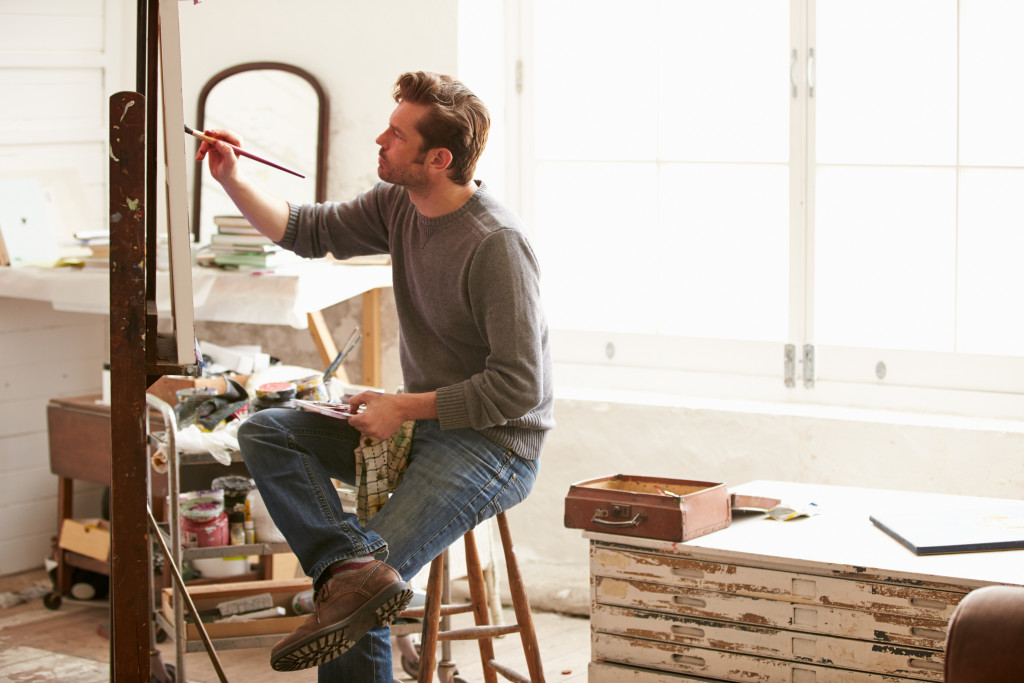- Hire professional product photographers for high-quality images to engage people.
- Get an idea of who your target customers are before you start selling.
- Calculate what materials cost and any framing or packaging costs to set a price that covers these expenses and allows for profit margins.
- Utilize social media platforms such as Instagram, Facebook, and Twitter as an effective way to get your work out there.
The thought of selling your work can be both exciting and intimidating. You’ve put so much time, effort, and love into creating each piece that it’s normal to feel apprehensive about the process. That being said, you should know some critical things before selling your paintings. Here’s what every artist should consider before putting their art on the market.
Create a Website
One of the most important steps when building a website for painting sales is having quality product images. Professional product photography can make or break your website and could be the difference between a sale or no sale.
Here’s a brief look at why hiring professional product photographers is essential for creating an engaging website that will increase the chances of making more sales.
Quality Matters
The first reason to hire professional product photographers for high-quality images is that it matters! A good impression can help engage people, give them an accurate idea of what they are looking at, and even encourage them to buy the painting. In addition, professional photography will ensure that each image has consistent lighting, background, and angles that create unity across all products on your website.
Professional Photographers Help You Stand Out

Another reason to hire professional product photographers for high-quality images is that it helps you stand out from other websites selling similar products. Professional photos will ensure that your paintings look better than everyone else’s and capture potential buyers’ attention immediately. This will help you stand out from the competition and draw more people toward your products!
Know Your Audience
Before you start selling, it helps to get an idea of your target customers. Think about what type of painting they might be interested in and how much they would be willing to pay. This will help when you market your pieces since you’ll know who precisely to target with your message. Researching potential customers can help you decide which platform or gallery is best for selling your paintings.
Understand Pricing
When setting the price of your artwork, it’s essential to understand all the costs associated with producing and marketing it. Calculate what materials cost, and any framing or packaging costs to set a price that covers these expenses and profit margins. Once you understand pricing, remember to adjust prices if needed once buyer feedback starts coming in – this is natural!
Get Active on Social Media
One of the most effective ways to get your work out there is by utilizing social media platforms such as Instagram, Facebook, and Twitter. With so many potential customers online, these platforms can be a great way to showcase your artwork and engage with potential buyers. Here are two helpful tips for optimizing your social media marketing strategy as an artist.
Build a Following on Social Media Platforms

The best way to get eyes on your artwork is by building a following on different social media platforms. You can do this by actively engaging with other users on the platform and presenting yourself as an authority in the art world.
By sharing interesting content related to art history or current trends in the industry, you can build credibility and become more visible within your niche. Remember to use hashtags when sharing your work—this will help you reach a wider audience!
Leverage Your Branding Across Channels
When it comes to selling art online, having consistent branding across all of your channels is essential. This means using similar logos, fonts, and colors across your accounts to be easily recognizable no matter which platform someone lands on.
Additionally, creating branded content such as tutorials or tip videos related to painting can help boost engagement and build loyalty among followers who appreciate learning from experienced professionals like yourself.
Final Thoughts
Selling artwork can seem like a daunting task, but understanding these key elements ahead of time can make the process easier and less overwhelming! Knowing your audience will help you properly market yourself; understanding pricing will ensure that all costs associated with production are covered; and creating an online presence will give potential buyers easy access to view and purchase works directly from you! With this knowledge, now is the perfect time for artists everywhere to start selling their work!





